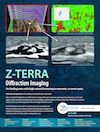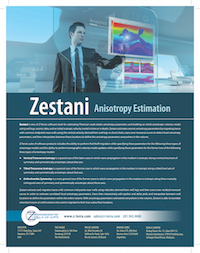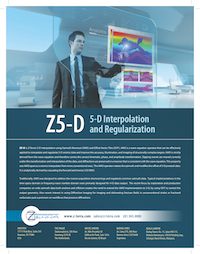mihai@z-terra.com
Kirchhoff methods are widely recognized as one of the most comprehensive and flexible methods of imaging prestack 3-D seismic data. ZTK is Z-Terra’s implementation of three-dimensional Kirchhoff migration in depth and in time. ZTK images seismic data by approximately solving the wave equation with a ...
Read More ...
Obtaining high quality images of subsurface structures requires an accurate velocity model. Migration Velocity Analysis (MVA) improves the velocity model associated with a survey in order to create an accurate image of subsurface structures. After seismic data has been migrated through its current i ...
Read More ...
FBM is Z-Terra’s Fast Beam Migration, a super-efficient algorithm that is two orders of magnitude faster than the industry standard Kirchhoff depth migration. Fast Beam Migration images multipathing energy, a property that is typically associated with wave equation migration algorithms. The faster a ...
Read More ...
Diffraction Imaging (DI) is a novel seismic imaging technique for focusing diffractions in order to produce super-resolution images of diffractors unattainable by conventional means. Seismic diffractors are small scale scattering subsurface elements such as small faults, fault edges, pinch-outs, sal ...
Read More ...
Z-Terra offers state-of-the-art depth imaging and complex velocity model building solutions. Velocity model building is an essential component for accurate depth imaging. Z-Terra has a wide range of velocity model building algorithms and workflows that provide high resolution depth anisotropic veloc ...
Read More ...
Zestani is one of Z-Terra’s software tools for estimating Thomsen weak elastic anisotropy parameters and building an initial anisotropic velocity model using well logs, seismic data, and an initial isotropic velocity model in time or in depth. Zestani estimates seismic anisotropy parameters by migra ...
Read More ...
Z5-D is Z-Terra’s 5-D interpolation using Azimuth Moveout (AMO) and Offset Vector Tiles (OVT). AMO is a wave-equation operator that can be effectively applied to interpolate and regularize 5-D seismic data and improve the accuracy, illumination, and imaging of structurally complex targets. AMO is st ...
Read More ...











